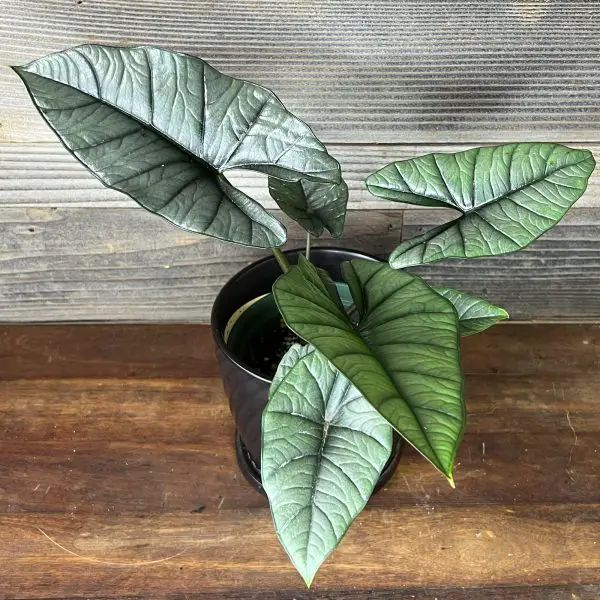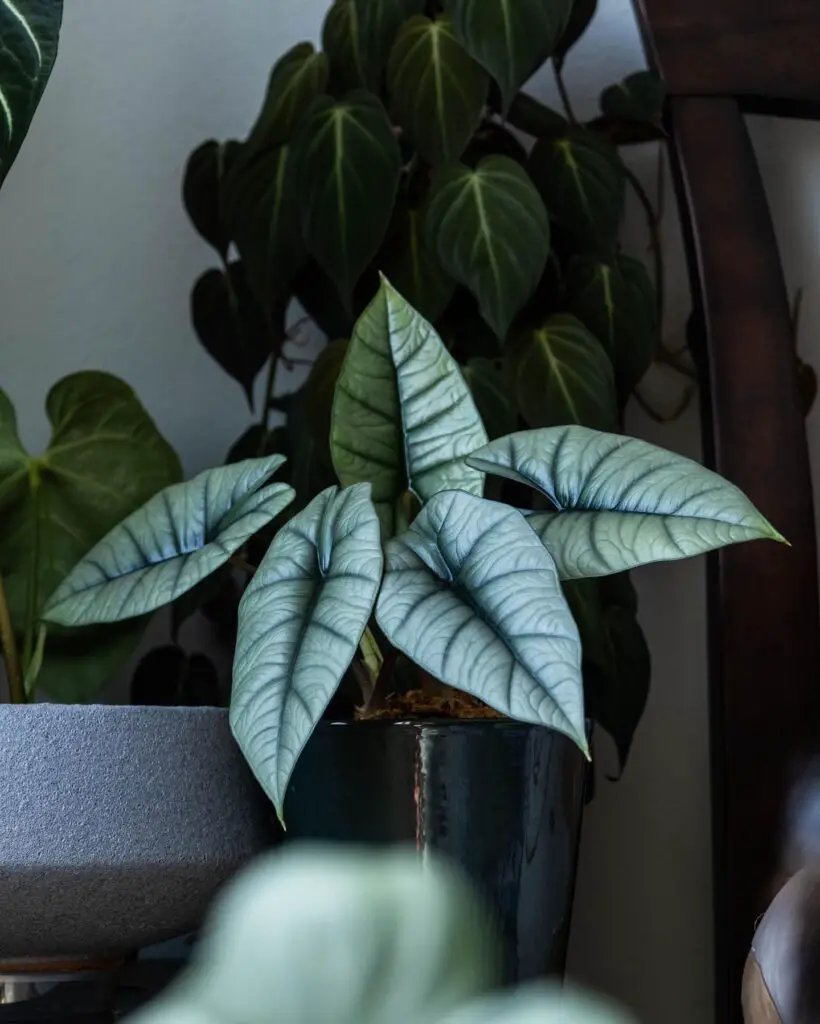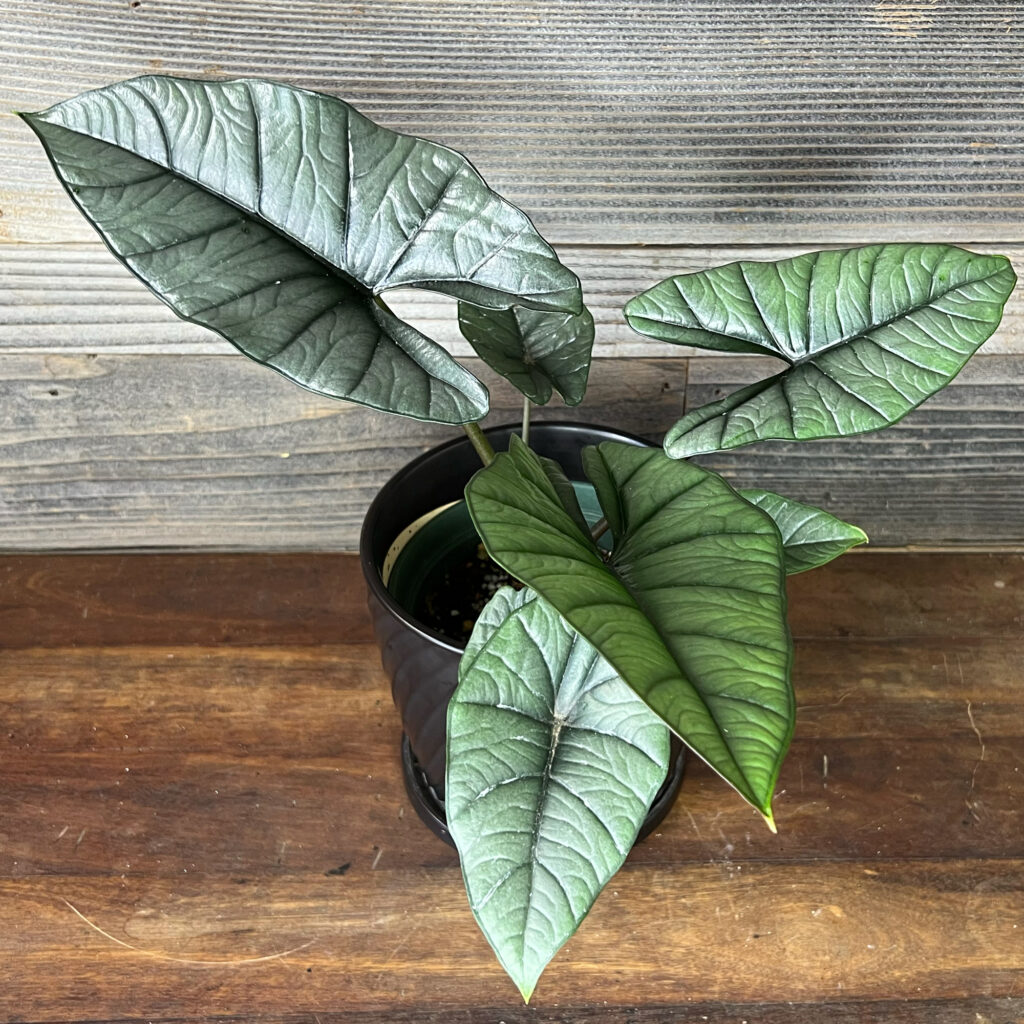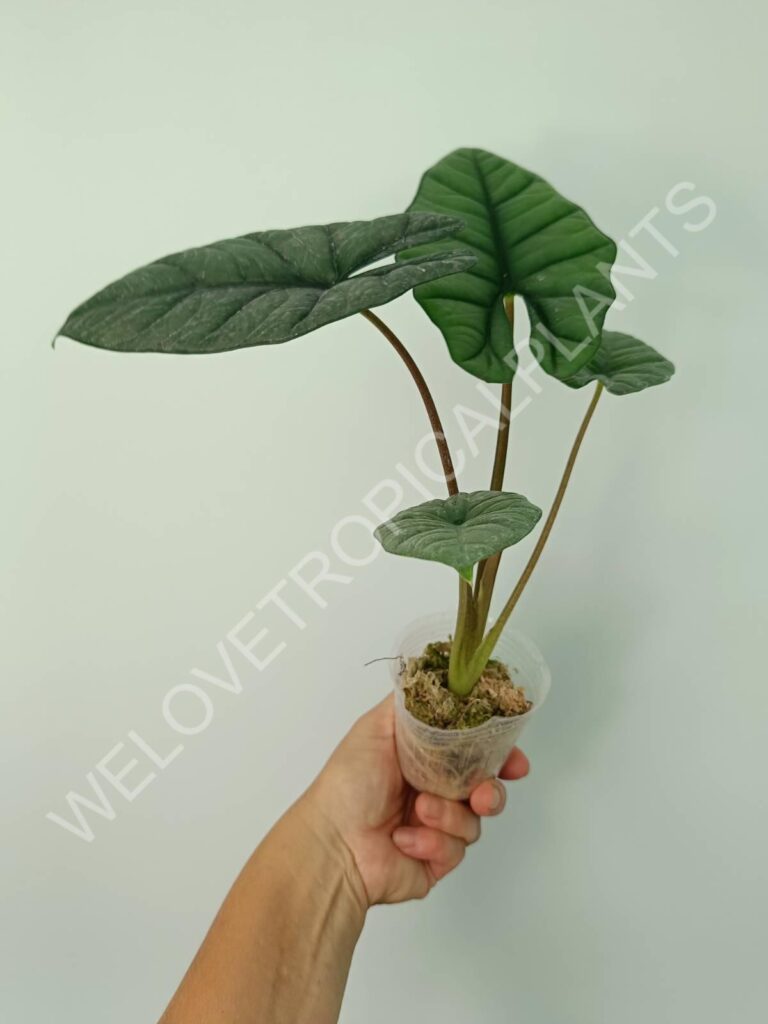Alocasia Bisma is a rare and sought-after plant known for its striking foliage. This tropical plant features large, arrow-shaped leaves that can display unique patterns and colors, making it a favorite among collectors. Its rarity adds to its allure, as it is not commonly found in nurseries.
Introduction to Alocasia Bisma
Alocasia Bisma belongs to the Araceae family, which includes many popular houseplants. Native to tropical regions, particularly Southeast Asia, these plants thrive in humid environments. Alocasia species are often referred to as elephant ear plants due to the shape of their leaves. The Bisma variety is particularly notable for its stunning leaf structure and vibrant coloration.

This plant has gained popularity among horticulturists and collectors for several reasons. First, its unique aesthetics make it a standout addition to any plant collection. Second, its care requirements appeal to various levels of plant enthusiasts. Alocasia Bisma is relatively easy to care for, provided its specific needs are met.
In recent years, the demand for rare varieties of Alocasia has surged. This has led to increased interest in the Bisma variety, making it a coveted item among plant collectors. The rarity of this plant often results in higher prices on the market, driving many enthusiasts to seek it out.
Characteristics of Alocasia Bisma
Alocasia Bisma features several key characteristics that set it apart from other varieties. Understanding these traits can help potential owners appreciate the beauty and care requirements of this plant.

- Leaf Structure: The leaves are large and heart-shaped, exhibiting a glossy surface that captures light beautifully.
- Coloration: The leaves can vary in color, often showcasing deep greens with hints of silver or purple undertones.
- Growth Habit: This variety tends to grow upright, producing a striking silhouette that adds height to indoor plant displays.
- Size: Mature plants can reach heights of up to 3 feet, making them substantial features in any space.
Cultivation and Care
Caring for Alocasia Bisma requires understanding its native habitat. These plants thrive in conditions that mimic their tropical origins. Here are some essential care tips:
- Light: Alocasia Bisma prefers bright, indirect light. Direct sunlight can scorch the leaves, while too little light may hinder growth.
- Watering: Keep the soil consistently moist but not soggy. Overwatering can lead to root rot, while underwatering may cause the leaves to droop.
- Humidity: High humidity levels are crucial for this plant. Consider using a humidifier or placing a tray of water nearby to maintain moisture in the air.
- Temperature: Ideal temperatures range from 65°F to 80°F. Protect the plant from cold drafts and sudden temperature changes.
- Fertilization: During the growing season, feed with a balanced liquid fertilizer every 4-6 weeks to promote healthy growth.
Why Collectors Value Alocasia Bisma
The value of Alocasia Bisma extends beyond its physical appearance. Collectors appreciate various aspects of this plant:
- Aesthetic Appeal: Its unique leaf shapes and colors make it a centerpiece in any collection.
- Rarity: The scarcity of this variety increases its desirability among plant enthusiasts.
- Conversation Starter: A distinctive plant like Alocasia Bisma sparks interest and discussion among visitors and fellow collectors.
| Characteristic | Details |
|---|---|
| Scientific Name | Alocasia Bisma |
| Family | Araceae |
| Native Range | Southeast Asia |
| Growth Habit | Upright |
| Mature Height | Up to 3 feet |
The fascination with Alocasia Bisma continues to grow as more individuals discover its beauty and rarity. For those interested in expanding their plant collection, this variety offers an exciting opportunity to own a piece of nature that is both stunning and unique.

Propagation Techniques for Alocasia Bisma
Propagating Alocasia Bisma can be a rewarding experience for plant enthusiasts. Understanding the methods of propagation will allow collectors to expand their collection or share this beautiful plant with others. There are two primary methods for propagating Alocasia Bisma: division and offsets.
Division Method
The division method is one of the most common ways to propagate Alocasia plants. This technique involves separating the plant into multiple sections, each with its own roots. Here are the steps to follow:
- Choose the Right Time: Spring is the best time to propagate Alocasia Bisma. The plant is actively growing, making it easier for new roots to establish.
- Prepare Your Tools: Use a sharp, sterile knife or garden shears to avoid transmitting diseases.
- Remove the Plant: Gently take the plant out of its pot. Shake off excess soil to expose the roots.
- Divide the Roots: Look for natural divisions in the root ball. Carefully cut through the roots, ensuring each section has a healthy amount of roots and at least one leaf.
- Replant: Place each divided section into its own pot with fresh potting soil. Water lightly and place in a warm, humid environment.
Offsets Method
The offsets method involves removing small plants that grow around the base of the main plant. These offsets are clones of the parent plant and can be easily rooted. Here’s how to propagate using offsets:
- Locate Offsets: Look for small plants growing near the base of the Alocasia Bisma. These are usually found at the soil level.
- Gently Remove Offsets: Carefully separate the offsets from the main plant, ensuring that you do not damage the roots.
- Prepare Pots: Place the offsets in small pots filled with well-draining potting mix.
- Water and Care: Water lightly and maintain high humidity levels to encourage root growth. Keep them in indirect light until they are established.
Pest and Disease Management
Caring for Alocasia Bisma also means being vigilant about potential pests and diseases. While these plants are relatively hardy, they can be susceptible to certain issues. Here are some common pests and diseases to watch for:

Common Pests
- Spider Mites: These tiny pests thrive in dry conditions and can cause leaf discoloration. Increase humidity and treat with insecticidal soap.
- Mealybugs: These pests appear as white, cotton-like masses on leaves and stems. Remove them manually or use neem oil for treatment.
- Aphids: Small, green insects that can cluster on new growth. Use a strong spray of water or insecticidal soap to eliminate them.
Disease Prevention
Preventing diseases is essential to keeping Alocasia Bisma healthy. Here are some tips:
- Avoid Overwatering: Ensure proper drainage to prevent root rot, a common issue in Alocasia plants.
- Inspect Regularly: Check leaves and stems for signs of infection or pests, addressing issues promptly.
- Maintain Air Circulation: Good airflow around the plant helps reduce humidity levels that can lead to fungal diseases.
Environmental Factors Affecting Growth
The growth and health of Alocasia Bisma are significantly influenced by environmental factors. Understanding these factors can help owners create optimal conditions for their plants.
3>Light Conditions The amount of light your Alocasia Bisma receives is critical. While it prefers bright, indirect sunlight, too much direct sun can scorch the leaves. Conversely, insufficient light may cause the plant to become leggy and weak. A well-lit room with filtered light is ideal for this variety. A well-draining potting mix is essential for Alocasia Bisma. Consider using a blend designed for aroids or adding perlite and orchid bark to standard potting soil to enhance drainage. This ensures that water does not sit around the roots, which could lead to rot. Humidity plays a vital role in the health of Alocasia Bisma. They thrive in environments with high humidity, similar to their native tropical habitat. Consider using a humidifier or placing a pebble tray filled with water near the plant to increase moisture levels. Understanding these propagation techniques, pest management strategies, and environmental factors can significantly enhance your experience with Alocasia Bisma. This knowledge will help you cultivate a thriving plant that showcases its natural beauty. While Alocasia Bisma is already a rare and beautiful plant, various cultivars and related varieties further enhance its appeal. Each variety has distinct characteristics that can attract different collectors and enthusiasts. Below, we explore some of the common varieties associated with Alocasia Bisma. This variety is cherished for its dark, velvety leaves that create a stunning contrast in any indoor space. Here are some key features: The Dragon Scale variety stands out with its unique leaf texture resembling dragon scales. This variety has captivated many collectors for its distinctive look: This particular variety features striking silver markings on its leaves, which adds an elegant touch to its overall appearance: Caring for rare varieties of Alocasia Bisma requires attention to specific needs. Although many care requirements are similar, slight variations can make a difference in their growth and health. Different varieties may have varying water needs based on their leaf size and thickness. Here are some tips for watering: The ideal temperature range for all varieties of Alocasia Bisma is between 65°F and 80°F. However, some varieties might be more sensitive to temperature fluctuations: Inc orporating Alocasia Bisma into your home decor can enhance the overall aesthetic of your space. Their unique foliage adds character and sophistication. Here are some styling ideas: Alocasia Bisma can be showcased in various indoor settings. Consider these options for display: The right pot can enhance the beauty of your Alocasia Bisma. Consider these tips when choosing containers: The combination of unique varieties and thoughtful styling options makes Alocasia Bisma a versatile choice for indoor gardening. Proper care and attention will ensure these stunning plants thrive in any setting. As you explore the world of Alocasia Bisma and its rare varieties, there are several additional tips to enhance your experience and ensure your plants flourish. These insights encompass everything from seasonal care to understanding plant behavior. Alocasia Bisma requires different care throughout the seasons. By adjusting your routine, you can support healthy growth year-round: Every plant has its unique personality, and Alocasia Bisma is no exception. Observing how your plant behaves can provide valuable insights into its needs: An en thusiastic community surrounds plant collecting, especially for rare varieties like Alocasia Bisma. Engaging with fellow collectors can enhance your knowledge and experience: The allure of Alocasia Bisma and its rare varieties lies in their stunning aesthetics and unique characteristics. As you embark on your journey with these plants, remember that patience and observation are key. With the right care, attention to detail, and a passion for plant collecting, you can cultivate a thriving indoor garden that showcases the beauty of Alocasia Bisma. Collecting these rare varieties not only enhances your living space but also connects you with a global community of plant lovers who share your enthusiasm. Whether you’re a seasoned collector or just starting, the journey with Alocasia Bisma will undoubtedly be rewarding. Embrace the challenge of caring for these unique plants, and enjoy the beauty they bring into your life. In conclusion, Alocasia Bisma offers a captivating blend of rarity, beauty, and adaptability. By understanding their specific needs and engaging with fellow enthusiasts, you can create an enriching environment for both you and your plants. Happy gardening!Soil Requirements
Humidity Levels
Common Varieties of Alocasia Bisma
Alocasia Bisma ‘Black Velvet’
Alocasia Bisma ‘Dragon Scale’
Alocasia Bisma ‘Silver Dragon’
Caring for Rare Varieties
Watering Considerations
Temperature Preferences
Styling with Alocasia Bisma
Indoor Displays
Pots and Planters
Additional Tips for Success
Seasonal Care Adjustments
Understanding Plant Behavior
Community and Resources
Final Thoughts
